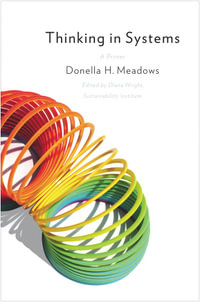| Job Design and Analysis | |
| Inventing the future: collaborative design of socio-technical systems | |
| CAFE OF EVE: action research in the control room | |
| Applied cognitive task analysis (ACTA): a practitioner's window into skilled decision making | |
| Job design in integrated mail processing | |
| A systems analysis of team working in control rooms: methodology considered | |
| Models of decision making in emergency management | |
| Emergency decision making on offshore installations | |
| Cognitive processing and risky behaviour in industrial radiography | |
| Modelling of human errors in cognitive processes observed in dynamic environments | |
| Mental models of industrial jobs | |
| Learning and Training | |
| Effects of type of learning on control performance | |
| Learning to control a coal-fired power plant: empirical results and a model | |
| Cognitive technology for knowledge and skill acquisition in engineering disciplines | |
| Dynamic modelling of a learning system to aid system re-engineering | |
| Learning statistics: a high level cognitive skill | |
| Perceptual learning in inspection tasks | |
| The operator's analysis of the structure of a multi-dimensional video image of a mosaic subject area given the effects of hidden regularities | |
| Target recognition performance following whole-views, part-views, and both-views training | |
| Medical Ergonomics | |
| Depth perception and indirect viewing: reflections on keyhole surgery | |
| Construction and validation of a model for decision making in anaesthesia | |
| Anaesthesiology and aviation: using the analogy | |
| Medical cognition and computer support in the intensive care unit: a cognitive engineering approach | |
| The patient-monitor system in intensive care: eliciting nurses' mental models | |
| Applied Cognitive Psychology | |
| Audio visual links in attention: implications for interface design | |
| A parallel distributed processing model of redundant information integration | |
| The magical name Miller, plus or minus the umlaut | |
| A partial theory and engineering model of human information-seeking tasks | |
| Model-computer interaction: implementing the action perception loop for cognitive models | |
| Predicting transaction time for dual-tasks using critical path | |
| Engineering psychology: the hidden psychologist - a case study on the evaluation of the Safer Cities programme using a geographical information system | |
| Rewritable routines in human interaction with public technology | |
| The function and effectiveness of dynamic task allocation | |
| Implicit memory: new procedures for cognitive load investigations in work situations | |
| Duration estimates: a potentially useful tool for cognitive ergonomists | |
| Research on auditory comfort by EEG measurement | |
| Head orientation and binaural depth perception | |
| The perception of spatial layout in telepresence systems | |
| Validation: the best kept secret in ergonomics! | |
| Performance anxiety and coping strategies for musicians | |
| Fatigue risk assessment for safety critical staff | |
| Product Design and Evaluation | |
| Integrating requirements acquisition and user modelling: things users want, and things users do | |
| Knowledge needs analysis for complex systems | |
| Generating user requirements from discount usability evaluations; | |
| "Satisficing" in engineering design: psychological determinants and implications for design support | |
| Modelling design processes of groups in industry: an empirical investigation of cooperative design work | |
| Styles of problem solving and their importance in mechanical engineering design | |
| Psychology of pointing: factors affecting the use of mice and trackballs on graphical user interfaces | |
| Communicating human-computer interaction design intent: requirements for recycling throwaway prototypes | |
| Metaphors in software engineering | |
| Hypertext, navigation and cognitive maps: the effects of a map and a contents list on navigation performance as a function of prior knowledge | |
| Personal identification code composed of pictures or numbers? | |
| Implementing user interface design standards for "mission critical" IT systems in telecommunications | |
| Script-based spatial user interface: an approach to supporting operators of process control systems | |
| Theories and interface design: designing interfaces with ecological and cognitive task analysis | |
| A cognitive psychological framework for the description and evaluation of interfaces | |
| The effectiveness of using combined mimic/emergent features and mimic/multilevel flow modelling displays in a pilot process control environment | |
| Using conversation to model interaction in the MATHS workstation | |
| Proposal for the development of an IT-infrastructure for the disabled person | |
| Application of human performance theory to virtual environmental development | |
| Table of Contents provided by Publisher. All Rights Reserved. |


























